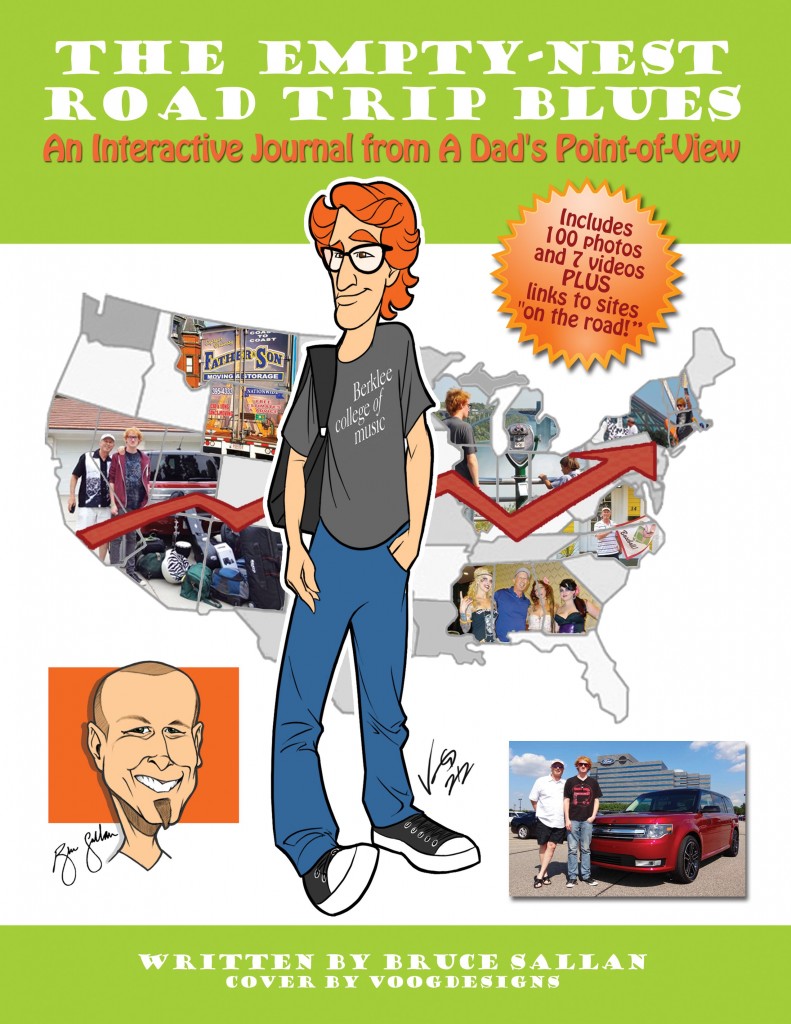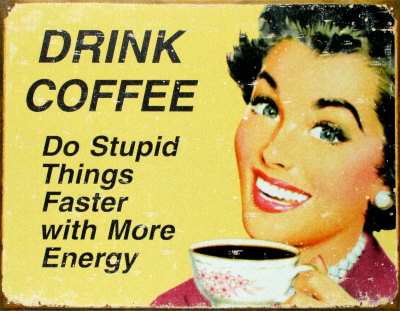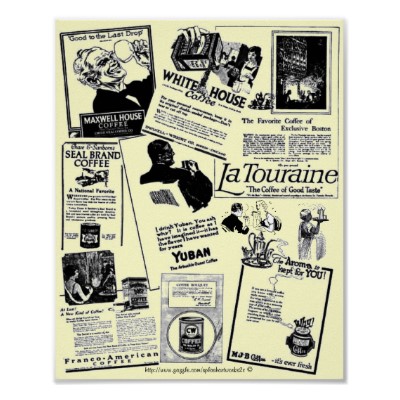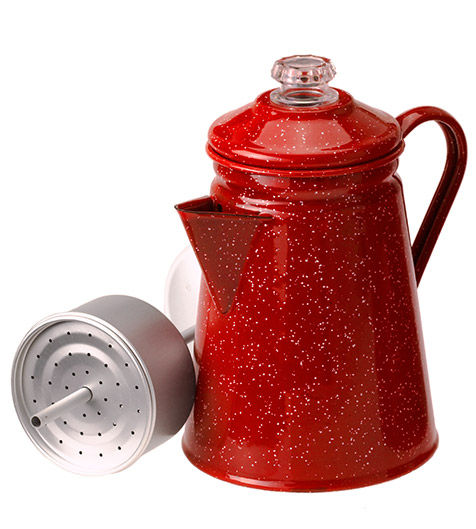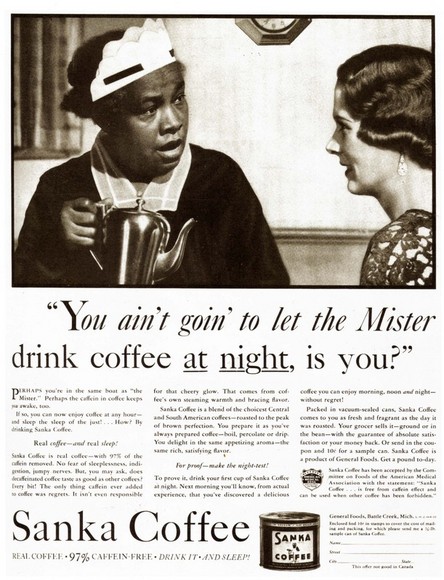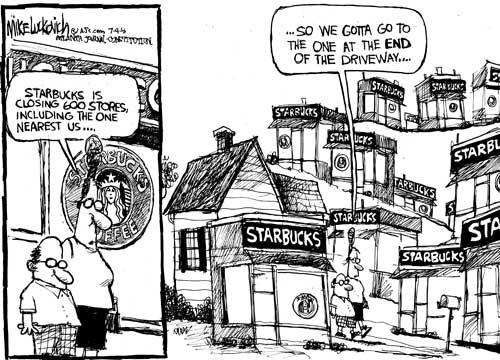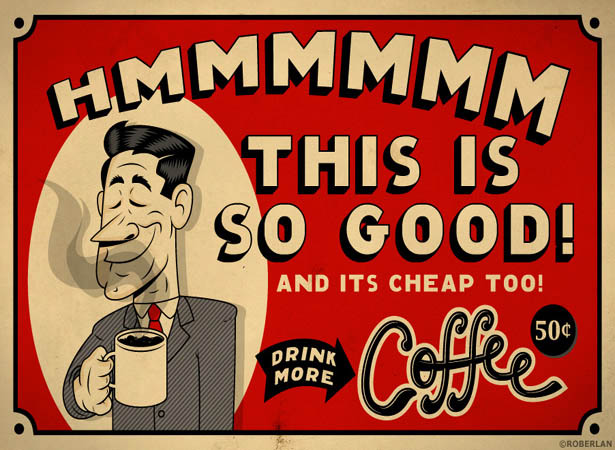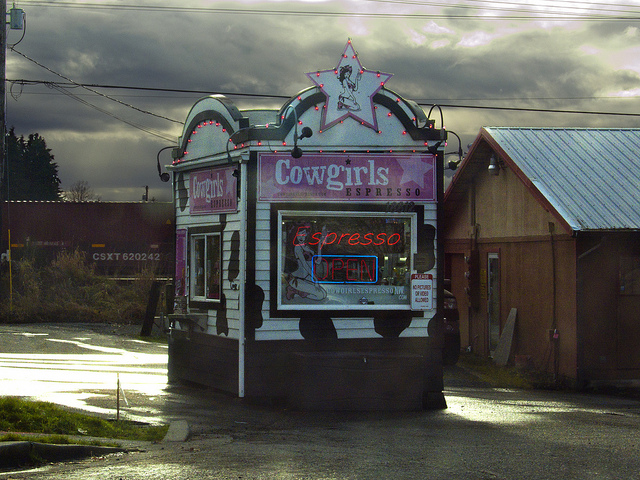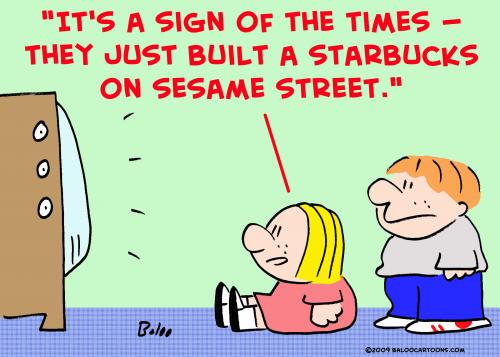The Evolution of Technology blog series is written by Bruce Sallan and Professor David E. Weber
Our series continues with the evolution of home coffee machines. Is there anything more ubiquitous in our lives? Oh yeah, television…but we did that already. How often do you buy a cup of coffee at Starbucks? Ever think about what that costs on an annual basis? We’ll look at that but, first let’s hear from Professor Weber.
Draw one…cuppa mud…draw one in the dark…Are we referring to art here? refreshment from the bayou, maybe? Fun and games under the staircase, perhaps? No. These are what you would hear a cup of black coffee called in a diner in the 1940s-1950s.
We surely don’t enjoy our coffee any less than our parents and grandparents did, but we don’t seem to use their colorful expressions to talk about what Thomas Jefferson, I believe it was, referred to as “the favorite drink of the civilized world.” We must surely have, however, more terms for different sizes of coffee servings. Sixty years ago, in a diner, you ordered coffee, it was splashed into a five- or six-ounce mug made of heavy china. Now, at Starbucks, for example, it’s tall (12 oz.), venti (16 oz.) and grande (about 20 oz.), plus a couple of lesser-known specialty sizes — for example, draw one in a trenti, i.e., a 30-oz. serving!
Apart from an evolution in how we talk about coffee, though, Bruce and I would like in this column to reflect on the evolution of technology in making coffee. So, if I may use my own experience as a starting point, I have in my home kitchen an electric coffee bean grinder and nine ways of making coffee: a Krups electric drip brewer; a Keurig brew-one-cup-at-a-time system; an electric percolator; a stovetop espresso percolator; two coffee presses (one French style, the other for making Vietnamese-style café filtre); an espresso machine; an old Melitta filtration coffeepot; and a finjan (used for making Turkish coffee). In case some kind of java apocalypse prevents me from using any of those tools, I have in the pantry a jar of instant coffee, not mention a small box of coffee bags, which look and are used as one would a teabag. Great for camping!
Speaking of camping, serious coffee drinkers who venture into the wilderness can purchase lightweight, compact versions (powered by a variety of portable sources) of any of those electronic devices. Unpowered systems – finjan, coffee presses, stove toppers – work on their own anywhere as long as you have water and a heat source. Some of the best coffee I have ever tasted (well, maybe it was the ambiance that made it so) was the “cowboy coffee” we used to make while backpacking: dump a small handful of ground beans into boiling water for a few minutes, then let it steep another few, and pour carefully, or strain through the cleanest tail among our shirts, so that the grounds stay out of the cup. Rich, fragrant, delicious…and as low-tech as you can get!
Contrast all of that to when I was growing up in the ‘50s and ‘60s, when my mother had exactly one “coffeemaker”- a stovetop percolator. In the late ‘60s, she went contemporary and bought an electric model. Indeed, I have an electric percolator today simply because I bought one (a discontinued item, no less) before my mother’s first trip to North Carolina to visit me from California; she prefers classic mid-century middle-class percolation to other methods of coffee preparation. In my youth, Mom brewed ground Yuban coffee exclusively – no coffee bean, let alone a coffee grinder, crossed our threshold.
The stainless steel coffee brewing apparatus in the famous Edward Hopper painting, Nighthawks, is for me the emblem of the best practices in commercial coffee brewing. I enjoy coffee from these machines most when it sluices out from the spigot hot and freshly made (Is it my imagination or are the bubbles formed in a cup of coffee being poured bigger when the coffee is freshly brewed?). Coffee brewed in and dispensed from such a device was standard fare for decades in diners, coffee shops, truck stops and other establishments, louche as well as classy. The joe may not have been perfect but it was often excellent. I am convinced that in the past twenty years if not more, the quality of proletarian coffee has declined, tasting watered down. One reason is surely a shift from the tall, hot-to-the-touch kiosk-like coffee machines to cheaper systems that make coffee quickly. One aberrant trend is combining coffee concentrate with hot water in a machine that dispenses the “coffee.” Something’s wrong when a manufacturer can in theory use the same template for writing instructions for making both frozen orange juice and hot coffee.
It is difficult to talk about the evolution in coffee-making technology without addressing the evolution in coffee drinking, and to do so, we must use the S-word: Starbucks. Despite all the anti-corporatist rhetoric aimed at it, despite the claim that it raised coffee snobbery to high art, I personally like Starbucks in principle and practice. Their regular brew is on the strong side for my taste, but enough sugar and half-and-half fixes that. Their Christmas blend beans grind down into very tasty coffee at home, where I can adjust the strength. More than that, though, I like the idea of Starbucks. According to company histories I have read, Starbucks as we now know it was envisioned as a chain of shops where people could linger in their communities. Even though I have a comfortable office at the university, I often suggest to students, colleagues and clients that we meet at the Starbucks near campus for dialogue. Conversation, checking email, composing or editing a digital document or file on a laptop, reading the newspaper—all these activities improve when done slowly and reflectively, with your coffee close at hand.
A bit more information, that goes well with your favorite cuppa mud…
From a 1999 book about the coffee and coffee drinking, read this digest (in a review of the book) of information about coffee and its place in human history and culture. And, if you think 411 about coffee should be packaged in smaller nuggets (or should I say “beans”), here are twenty-two facts about coffee.
Thank you, Professor. Reading your musings makes me realize that this apparently simple topic has much complexity. We can only “cover” coffee superficially so I’ll just add a few random thoughts:
~~ When I was a kid, small American restaurants were called “Coffee Shops.” You could go there for a cup of coffee, desert and a cup of coffee, or any meal they happened to serve. Coffee probably cost about 10 cents then.
~~ Recently, I met with a boutique coffee roaster and learned much about the complexity of making and roasting coffee beans as well as the major differences in how they are ground and stored. Simply put, a good grinder is expensive. Forget those $10-$20 Krups and other brands, according to this coffee expert. Ground coffee is “fresh” for only about a week. It’s best stored in an airtight container at room temperature. The beans are best stored in the freezer also in an airtight containter.
~~ The notion of convenience has reduced “the art of coffee” to yet another fast-food item. Starbuck’s has recently announced changed some of their stores to drive-through only! Isn’t that exactly the opposite of their mission of creating and nurturing community?
~~ Visiting the Northwest I was struck by the fact that there seemed to be a coffee kiosk on just about every corner. I know that Seattle is the “home” of Starbuck’s, but these kiosks were much more ubiquitous than even the famous corner in downtown Seattle that used to have Starbuck’s on three of its four hubs!
These kiosks all have fun designs and names, but why so many? It finally dawned on me that the answer was simple. In that part of the country, it’s dark and wet a LOT of the time. Coffee/caffeine is a great and obvious cure for surviving in that environment.
~~ Coffee, like wine is a learned and acquired taste. But, for many of us, all we care about is that it’s either real hot or over ice. I cannot tell the difference between many coffees except if it’s especially strong.
~~ The great book about money – The Millionaire Next Door – explains how the seemingly innocuous and inexpensive habit of buying a daily coffee and donut can add up to a substantial annual expense. I make two black coffees on my basic espresso machine. I treat myself to a specialty coffee now and then – especially when Pumpkin-flavored options are available. The cost differential is HUGE. BTW, the same applies to wine. Drinking wine “out” costs about four times what it does at home. Both coffee and wine (all alcohol for that matter) mark-ups are the biggest in the food industry and their biggest profit center.
We want your thoughts on coffee. What machines do you use? Does anyone have as many as Professor Weber does? Is that crazy or what! Do you like the Keurig-style coffee makers? I think they are a waste. At least there’s a re-useable container now sold via infomercials. That at least makes sense. But really, is it that hard to make a cup ‘o joe yourself?
Get my new book – click on the cover image below for the PDF version at $2.79 and other deals or for $2.99 get the the Amazon/Kindle version: 